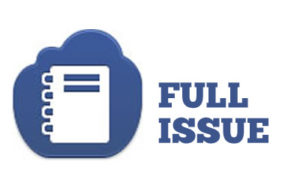 FOCUS, Wentworth: From Nuremberg to Pittsburgh
FOCUS, Wentworth: From Nuremberg to Pittsburgh
COMMENTARY, Brack: S.C. House races need to be more competitive
IN THE SPOTLIGHT: S.C. Ports Authority
GOOD NEWS: Changes ahead at the S.C. House
PHOTO ESSAY: YallFest
FEEDBACK: Latest commentary was spot on
MYSTERY PHOTO: A bridge to somewhere
S.C. ENCYCLOPEDIA: Sweetgrass baskets
CALENDAR: Gospel Christmas set for Dec. 1
FOCUSFOCUS, Wentworth: From Nuremberg to Pittsburgh
Editor’s note: Since S.C. Poet Laureate Marjory Wentworth penned the moving piece below, there’s been another mass shooting of gun violence that left 12 people dead in Thousand Oaks, Calif. Photos by Andy Brack
By Marjory Wentworth, contributing editor | In 2016, the lawyers from the International Criminal Court asked me to write a poem for the 70th Anniversary of the closing of the military tribunals at Nuremberg. At the time, I was finishing writing the book We Are Charleston, Tragedy and Triumph at Mother Emanuel, immersed in the unfathomable grief of the families and survivors. Charleston was still recovering from one of the worst hate crimes in American history
The links between racism and anti-Semitism are innumerable. In fact, the NAACP has Jewish roots. The organization was founded by both black and white civil rights activists, including a Jewish man named Henry Moskowitz. Most recently, we all witnessed this horrific connection at the white supremacist gathering in Charlottesville, Va., in May 2017, and now there is Pittsburgh and the anti-Semitic motivations of Paul Bowers who declared that he “wanted all Jews to die.” Dylann Roof’s manifesto was filled with anti-Semitic and pro-Nazi rhetoric, and his intention in Charleston was to start a race war. Now, we are grappling with another mass shooting in a sacred space — another murderer radicalized on the Internet, another American city burying the dead.
I grew up in Swampscott, Mass., in a predominantly Jewish neighborhood. Some of the shops were closed on Saturdays and many of the cultural traditions were not something we practiced in our home. It was a neighborhood haunted by the Holocaust, and that deep wound permeated my childhood and my understanding of human behavior. And then in the 1980s, I moved to Charleston, a place also haunted by a cruel past. The unhealed wounds of slavery seemed to permeate the institutions here. I was not prepared for it.
David M Shribman, executive editor of The Pittsburgh Gazette, grew up in Swampscott, too. In a moving editorial published earlier this week he stated: “We knew it could happen here—any here, anywhere—when we learned that nine people were killed three years ago in the historic Mother Emanuel Church in Charleston, S.C….”
David and I lived in the same neighborhood, within walking distance of each other. David also lives in the Squirrel Hill neighborhood of Pittsburgh, just three blocks from the Tree of Life Congregation. This week, David reminded us that no American is immune from the danger of a mass shooter.
Not even first graders. Late on the morning of Dec. 14, 2012, my friend, poet Carol Ann Davis, sent me the following text: “The boys are ok, they go to a different school. Will call…” Although Carol Ann lives less than a mile from the Sandy Hook Elementary School, her children were spared. Because of zoning, they attended a different elementary school in Newtown.
I can’t be the only one who has friends in these communities impacted by mass shootings. I can’t be the only one who feels overwhelmed with the collective grief spreading across our country. I think of my husband’s film student who had worked with both the perpetrator and the victims at WDBJ in Roanoke when the shooter killed the reporter and cameraman on live television on Aug. 25, 2015. One month before that horrific murder, Jillian Johnson was murdered in a movie theater in Lafayette, La. She grew up with my husband’s best friend.
No one is safe anywhere in America. Not in our houses of worship, not in our homes, not in our schools, not in our movie theaters, not in our restaurants or shopping malls. According to the Gun Violence Archive, more than 12,000 Americans have been killed by guns in 2018; and there have been over 300 mass shootings (in which four or more people are shot).
We are living in a war that we have declared on ourselves.
I will never understand our need to blame “the other” for perceived problems, nor do I understand our capacity to abandon everything we know is right. How quickly and easily we tear the ties that bind us on to another as if they were made of air.
As I watch the citizens of Pittsburgh bury the dead and come together as a community, I recall the great love that I witnessed in Charleston in the days and weeks of that long hot summer of 2015. I am reminded of the Rev. Clementa Pinckney’s prescient statement made two months before his murder, “Only love can conquer hate.” Carol Ann Davis calls it heroic love.
And I go back to Nuremberg and what it stands for. It is the actions we take based on this profound love for one another that have the potential to change the future. Make no mistake, the murders at the Tree of Life Synagogue in Pittsburgh and Charleston’s Mother Emanuel A.M.E. Church, were hate crimes and crimes against humanity. What separates genocide from other mass acts of violence is the intention of destroying a group of people based on race, religion, ethnicity or nationality.
Nuremberg and the founding of the International Criminal Court reminds us that there can be justice. We can create mechanisms to hold people accountable that are international in scope. The American legal system is fully equipped to deal with white supremacist and anti-Semitic mass murderers like Dylann Roof and Paul Bowers. Roof, accused and convicted of hate crimes, has been sentenced to death many times over. Bowers has been charged with 44 federal counts, including hate crimes with a possible death sentence.
What sets Nuremberg apart is something deeper. It reminds us that our behavior must always be governed by our love for one another, no matter what our leaders say or do.
When our hearts our broken, we must hold onto one another and try to bring meaning to the unfathomable loss. Human beings must come together and create something new out of the ashes of our sins.
Although we may never understand the human capacity for evil, we can find ways to regulate hate speech on the internet without violating the First Amendment. We can change the gun laws in multiple ways that can insure safety of all our citizens without eliminating the Second Amendment. .
We can do better. Our lives depend on it.
South Carolina Poet Laureate Marjory Wentworth is the co-writer of We Are Charleston, Tragedy and Triumph at Mother Emanuel. She lives in Mount Pleasant.
- Have a comment? Send to: editor@charlestoncurrents.com
BRACK: S.C. House races need to be more competitive
By Andy Brack, editor and publisher There’s a big lesson in the 2018 elections for the S.C. House of Representatives: The more competitive that elections are, the more likely the old order will be shaken up.
 Sadly in 2018, 80 of 124 races for the House were not competitive in the general election. Forty-two Republicans, mostly in the Upstate, and 28 Democrats faced no November challengers, although some had primary challengers in June. Of the 44 remaining November races, only 10 had margins of victory of fewer than 20 points, meaning they were somewhat competitive.
Sadly in 2018, 80 of 124 races for the House were not competitive in the general election. Forty-two Republicans, mostly in the Upstate, and 28 Democrats faced no November challengers, although some had primary challengers in June. Of the 44 remaining November races, only 10 had margins of victory of fewer than 20 points, meaning they were somewhat competitive.
Those 10 seats are the most instructive: Seven of the 10 challenged, competitive seats were along the coast. In Berkeley County, newcomer Krystle Simmons, a Democrat, beat GOP Rep. Bill Crosby, who hasn’t faced an opponent since 2010. Also in Berkeley County, Democratic newcomer J.A. Moore beat incumbent Republican Samuel Rivers Jr. Conversely in Dorchester County, longtime Democratic Rep. Patsy Knight lost by six points to Republican newcomer Mandy Kimmons.
In Charleston County, which turned out big in the U.S. House race for Democratic candidate Joe Cunningham in his “blue wave” victory over Katie Arrington, James Island’s Carol Tempel came just two points short of knocking off GOP S.C. Rep. Peter McCoy.
Bottom line: Incumbents in the Trump era may be a little more vulnerable than people traditionally have thought. But if no candidates from other parties challenge incumbents, there can’t be real change.
So when the new session of the S.C. House gets underway in 2019, it will look about how it looked this year. The chamber will have 80 Republicans and 44 Democrats. And that should tell you something: Old-fashioned gerrymandering of districts to support incumbent officeholders has worked to favor the GOP year after year.
Just look at the state map. Republicans completely dominate Upstate House seats with only three Democrats, all black women, among office holders in the Upstate, which is home to one-third of House seats. It’s just all red. But imagine what would happen if some of the 40 Upstate seats, 27 of which were uncontested, actually had opponents in the general election? Despite hurdles caused by specially-drawn gerrymandered seats to protect incumbents, some of these seats might actually become competitive. At the very least, voters would have a choice.
Lowcountry House seats are competitive, in part, because new people are moving into the area. Charleston is trending blue because of the newcomers, but also because of an energized party that offers choices to voters.
“I definitely think my winning is indicative of change,” Simmons told Post and Courier reporter Brenda Rindge said. “I think that people are moving in every day, and you’re getting more of a mesh of people. I definitely think the way the county looks is changing, and I think that some of the people are realizing that not all change is bad change.
“Even some of the people who have been there their whole lives … they’re ready for something different. You don’t have to lose the integrity of who you are in order to embrace change.”
Berkeley County Democratic Party Chair Melissa Watson told the newspaper that voters like choices.
“I always knew that if the party had a candidate on the ballot that we would win that seat,” she said. “In 20 years, we never had a single Democratic choice. Krystle Simmons was unafraid to step up and say she was a Democrat.”
There are two more lessons in the 2018 election results, particularly for political parties: Start doing your job better to recruit, train and help candidates to run for House seats. It won’t be easy, particularly because the deck of gerrymandered district lines may be stacked against you. But if you don’t try, nothing will ever change.
Second, Democrats in the legislature should start hollering now that voters won’t accept more gerrymandering after the 2020 census. Other states, such as Iowa, and countries, such as Australia, have figured out ways to have independent commissions to draw lines fairly and without politics in mind. South Carolina needs to jump on the bandwagon of transparency, accountability and fairness in legislative reapportionment of districts. To do less is a slap in the face of voters who want real choices, not incumbents who go unchallenged year after year.
- Have a comment? Send to: editor@charlestoncurrents.com
SPOTLIGHT: South Carolina Ports Authority
 The public spiritedness of our underwriters allows us to bring Charleston Currents to you at no cost. Today we shine our spotlight on a new underwriter, the South Carolina Ports Authority (SCPA). Founded in 1942, the SCPA owns and operates public marine terminals at two port facilities, the Port of Charleston and the Port of Georgetown, in addition to inland ports in Greer and Dillon, S.C. These facilities are owner-operated terminals, meaning the SCPA owns the terminals, operates all container cranes, manages and operates all container storage yards and leads all customer service functions in both the yard and the lanes.
The public spiritedness of our underwriters allows us to bring Charleston Currents to you at no cost. Today we shine our spotlight on a new underwriter, the South Carolina Ports Authority (SCPA). Founded in 1942, the SCPA owns and operates public marine terminals at two port facilities, the Port of Charleston and the Port of Georgetown, in addition to inland ports in Greer and Dillon, S.C. These facilities are owner-operated terminals, meaning the SCPA owns the terminals, operates all container cranes, manages and operates all container storage yards and leads all customer service functions in both the yard and the lanes.
SCPA promotes, develops and facilitates waterborne commerce to meet the current and future needs of its customers, and for the economic benefit of the citizens and businesses of South Carolina. In fact, SCPA facilities in Charleston, Dillon, Georgetown and Greer drive $53 billion in annual statewide economic impact and 1 in every 11 SC jobs is attributed to the Port.
- For more information, visit www.scspa.com.
- To meet all of our underwriters, click here.
GOOD NEWS: Changes ahead at the S.C. House
Staff reports | While the big political news of last week in the Lowcountry was Democratic candidate Joe Cunningham’s win over GOP Rep. Katie Arrington in the race for the First Congressional District, the S.C. House has several changes ahead – including Democrats taking two Lowcountry S.C. House seats. These are seats of new House members who faced opposition:
 Republican West Cox defeated Democratic foe Lucy Hoffman to take the open seat of S.C. House District 10 in Anderson (formerly Republican Joshua Putnam’s seat);
Republican West Cox defeated Democratic foe Lucy Hoffman to take the open seat of S.C. House District 10 in Anderson (formerly Republican Joshua Putnam’s seat);- Democratic candidate J.A. Moore ousted Republican incumbent S.C. Rep. Samuel Rivers Jr. for S.C. District 15 of Berkeley;
- Republican Randy Ligon won S.C. House District 43 of Chester over Democratic candidate Tom Hawk;
- Democratic candidate Kambrell Garvin defeated Libertarian Justin Bishop for the S.C. House District 77 inf Richland County;
- Republican Paula Rawl Calhoon defeated Democratic opponent Diane Summers take the open seat of S.C. House District 87 of Lexington (formerly Republican Todd Atwater’s seat);
- Republican Con Chellis bested Democratic challenger Damian Daly for the open seat of S.C. House District 94 of Dorchester (This was Arrington’s seat);
- Republican Mandy W. Kimmons beat Democratic incumbent Patsy Knight for S.C. House District 97 of Dorchester; and,
- Democratic challenger Krystle N. Simmons ousted Republican incumbent Bill Crosby for S.C. House District 117 of Berkeley.
Here are the new House members who were unopposed:
- Republican Adam Morgan won S.C. House District 20 of Greenville;
- Republican David Cox won S.C. House District 21 of Greenville;
- Republican Max Hyde won S.C. House District 32 of Spartanburg;
- Democratic candidate Annie McDaniel won S.C. House District 41 of Winnsboro;
- Republican Doug Gilliam won S.C. House District 42 of Union;
- Democratic candidate Seth Rose took S.C. House District 72 (This was gubernatorial candidate Smith’s seat);
- Republican William Bailey won S.C. House District 104 of Horry; and,
- Democratic candidate Shedron Williams of Hampton won S.C. House District 122.
The S.C. House’s overall composition is unchanged from this year. Next year, it will have 80 Republicans and 44 Democrats.
Also in Good News:
Blood battle. The American Red Cross invites alumni and fans of the University of South Carolina and Clemson University to donate blood and show their school spirit during the 16th annual Lowcountry Carolina vs. Clemson Blood Battle. The annual Carolina-Clemson blood drive is set for Monday, Nov. 12 through Wednesday, Nov. 21 at Red Cross donation centers in West Ashley and Mount Pleasant. The drive comes at a time when donors are needed to help ensure blood is available for patients throughout the holidays. To participate, download the American Red Cross Blood Donor App, visit redcrossblood.org or call 1-800-RED CROSS (1-800-733-2767) to make an appointment or for more information.
CofC finalists. The College of Charleston Board of Trustees has announced three finalists under consideration to be the institutions 23rd president: Michael T. Benson, president, Eastern Kentucky University; Andrew T. Hsu, provost and executive vice president of academic affairs, University of Toledo; and Rhonda Phillips, dean, Honors College, Purdue University They will visit the college this week. More info.
Beer wave. You might have missed news in other parts of the state about a beer wave in Tuesday’s elections. Sunday alcohol sales were approved by voters in at least seven local governments: Florence County, McCormick County, city of McCormick, Laurens County, Darlington County, city of Abbeville, Calhoun County, Anderson County and Greenwood County.
PHOTO ESSAYPHOTO ESSAY: YallFest
Staff reports | Hundreds of book lovers flooded the upper King Street blocks around Blue Bicycle Books on Friday and Saturday to meet young adult authors, buy books, enjoy the weather and talk about books during the YallFest, the annual Charleston Young Adult Book Festival.
Sixth-grader Ellie Brack, now a sometimes contributing photographer for Charleston Currents, could get extra credit at her school by snapping at least 10 photos of the event and putting them in a display. We thought you’d like to see the event in her eyes:
FEEDBACKLatest commentary was spot on
To the editor:
![]() Spot on. (“Drop the rhetorical frenzy and focus more on unity”)
Spot on. (“Drop the rhetorical frenzy and focus more on unity”)
Every one of your points were valid and insightful, particularly your emphasis on what leaders can and should do.
Truly an important message.
— David Brown, Daniel island, S.C.
Send us your thoughts in two ways
We’d love to get your impact in one or more ways:
Send us a letter: We love hearing from readers. Comments are limited to 250 words or less. Please include your name and contact information. Send your letters to: editor@charlestoncurrents.com. | Read our feedback policy.
Tell us what you love about the Lowcountry. Send a short comment – 100 words to 150 words – that describes something you really enjoy about the Lowcountry. It can be big or small. It can be a place, a thing or something you see. It might the bakery where you get a morning croissant or a business or government entity doing a good job. We’ll highlight your entry in a coming issue of Charleston Currents. We look forward to hearing from you.
MYSTERYMYSTERY PHOTO: A bridge to somewhere
Here’s a clue on this week’s mystery: It’s not in South Carolina, but doesn’t it look familiar? What and where is it? Send your guess to: editor@charlestoncurrents.com. And don’t forget to include your name and the town in which you live.
Our previous Mystery Photo
Our Nov. 5 mystery, “Flower power” by Andy Brack, shows people placing flowers at the Tree of Life synagogue in Pittsburgh following the massacre of 11 worshippers.
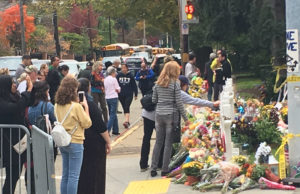 Congratulations to several readers who correctly identified the photograph, including: Chris Brooks of Mount Pleasant; David Brown of Daniel Island; David Savard and Joe Mendelsohn, both of Charleston; Wendy Kulick of Kiawah Island; Bud Ferillo of Columbia; Dwight Cunningham of Cheverly, Md.; Larry Simon of Isle of Palms; Marnie Huger of Richmond, Va.; and George Graf of Palmyra, Va.
Congratulations to several readers who correctly identified the photograph, including: Chris Brooks of Mount Pleasant; David Brown of Daniel Island; David Savard and Joe Mendelsohn, both of Charleston; Wendy Kulick of Kiawah Island; Bud Ferillo of Columbia; Dwight Cunningham of Cheverly, Md.; Larry Simon of Isle of Palms; Marnie Huger of Richmond, Va.; and George Graf of Palmyra, Va.
Other photos from that devastating scene are in Marjory Wentworth’s column in today’s issue.
- Send us a mystery: If you have a photo that you believe will stump readers, send it along (but make sure to tell us what it is because it may stump us too!) Send it along to editor@charlestoncurrents.com.
HISTORY: Sweetgrass baskets
S.C. Encyclopedia | For as long as people of African descent have lived in Carolina, they have made baskets. The early history of the Lowcountry coiled grass basket parallels the rise of rice cultivation on the southeastern coast of North America. The skills associated with growing rice and processing the grain were familiar to Africans, especially people from the upper Guinea coast, where Europeans saw rice under cultivation as early as 1446, and people from the inland delta of the Niger River, where rice has been grown for two thousand years. One particular basket—a wide winnowing tray called a “fanner,” common to both Senegambia and South Carolina—was essential in separating the grain from its chaff.
Like the grasslands and marshes of western and central Africa, the coastal wetlands of Georgia and South Carolina provide grasses and plant fiber appropriate for making coiled baskets. On Lowcountry plantations, enslaved Africans used bulrush most often as the foundation material. To wrap and stitch the rows of the baskets together, people who lived on the Sea Islands fashioned strips from the stems of saw palmettos, while sewers on the mainland used white oak splints.
Following the Civil War, men continued to make agricultural baskets on family farms carved out of the old plantations, while women made household forms such as sewing and storage baskets, carrying trays, and “missionary bags,” said to be modeled on bags carried by the Quaker missionaries. With rice production in decline, household baskets came to dominate, and women became more conspicuous in the craft. The shift from “work baskets” to “show baskets” also meant a change in materials from bulrush to sweetgrass and from saw palmetto to cabbage palm.
The sweetgrass revolution at the turn of the twentieth century began in the vicinity of Boone Hall Plantation near the village of Mount Pleasant, across the Cooper River from Charleston. There, around 1916, a young merchant named Clarence W. Legerton contacted Sam Coakley, an elder in the black community, and arranged to come every other Saturday to Coakley’s house to buy baskets in quantity to sell retail in his King Street shop and wholesale to department stores in New York and other northern cities.
Basket production increased dramatically. With the paving of coastal Highway 17 and the opening of the Cooper River Bridge in 1929, basket makers found a way to reach their primary market directly. They began selling baskets on the roadside, displaying them on chairs or overturned crates. As the tourist trade quickened, sewers responded with new basket shapes displayed on an innovative marketing device—the basket stand.
Since the 1970s, suburban and resort development has drastically diminished the local supply of sweetgrass. The highway that once assured the survival of the tradition threatens to run the basket stands off the road. In spite of these dangers, lowcountry basketry continued to thrive into the twenty-first century. To compensate for the sweetgrass shortage, sewers reintroduced bulrush. Baskets became bigger and bolder. As symbols of a distinct African American culture, lowcountry baskets have much significance and meaning. Yet they remain what they have always been: coiled grass vessels that are useful for countless purposes.
— Excerpted from an entry by Dale Rosengarten. This entry hasn’t been updated since 2006. To read more about this or 2,000 other entries about South Carolina, check out The South Carolina Encyclopedia, published in 2006 by USC Press. (Information used by permission.)
ON THE CALENDARCALENDAR: Gospel Christmas set for Dec. 1
Staff reports | The Charleston Gospel Choir presents the 19th annual Gospel Christmas at 7:30 p.m., Dec. 1, at Burke High School Auditorium, 244 President Street, Charleston.
![]() A Lowcountry household name, the Charleston Gospel Choir brings real meaning to Charleston’s musical landscape performing down-home traditional spirituals and gospel renditions including s including gospel arrangements of Carol of the Bells, Do You Hear What I Hear, and Little Drummer Boy.
A Lowcountry household name, the Charleston Gospel Choir brings real meaning to Charleston’s musical landscape performing down-home traditional spirituals and gospel renditions including s including gospel arrangements of Carol of the Bells, Do You Hear What I Hear, and Little Drummer Boy.
The performance will be conducted by Dr. Antoine T. Clark and will feature the Gospel Christmas Orchestra comprised of regional musicians for a rousing celebration of gospel favorites, moving spirituals, and festive holiday arrangements. This year, the Queen City Singers of Charlotte, directed by D.J. Boyd, will join the Charleston Gospel Choir. Boyd guest conducted the choir in Spring 2015.
- Tickets are $35 for adults, $30 for seniors and $15 for students. Learn more online.
Also on the calendar:
Holiday Festival of Lights. The Holiday Festival of Lights returns to James Island County Park is back for its 29th year every evening through Jan. 1, 2019. This spectacular light show is one of Charleston’s most beloved holiday events, featuring an estimated two million shimmering lights. The Holiday Festival of Lights is every evening at 5:30 p.m. nightly and closes at 10 p.m. Sunday through Thursday and 11 p.m. Friday and Saturday. More info: http://www.HolidayFestivalofLights.com
Ford and Tecklenburg talk: 6 p.m. to 8 p.m., Nov. 15, Mount Zion AME Church, 5 Glebe St., Charleston. As part of the Sophia Institute’s Social Justice Racial Equity Collaborative, historian Damon Fordham and Charleston Mayor John Tecklenburg will reflect on Charleston’s past and present and how history has shaped their commitment to social justice and racial equity. Free, but registration is requested here.
C4WNEW: Nov. 15-16, Trident Technical College, North Charleston. This event, the Center for Women’s annual conference, will feature author Elizabeth Gilbert as special guest. To learn more or buy tickets, click here.
Grand opening: Nov. 19. Le Creuset will have a grand opening of its first outlet store in the area at Tanger Outlet in North Charleston and will celebrate it through Nov. 21 with special savings and more. Store hours will be Monday through Saturday 9 a.m. to 9 p.m. and Sunday from 10 a.m. to 7 p.m.
THAT Holiday Book Sale: Nov. 30 to Dec. 1, Mount Pleasant Regional Library, 1133 Mathis Ferry Road in Mount Pleasant. Looking for some extra stocking stuffers this Christmas? Shopping for Kwanzaa or a New Year’s Party? Come shop the Charleston Friends of the Library Holiday Book Sale, and support your local library system for the holidays. Learn more: CharlestonLibraryFriends.org
Guevara art show: Nov. 30 to Jan. 11, 2019 (Tuesdays through Saturdays), Redux Contemporary Art Center, 1056 King St., Charleston. Redux will present new work by fiber artist Camela Guevara in a show titled “Care Work.” Click to learn more.
Light the Lake: 5:30 p.m. to 7:30 p.m., Nov. 30, Colonial Lake, Charleston. The Charleston Parks Conservancy will celebrate a tree lighting at the lake and will have good trucks on site and a DJ playing holiday music. More.
Early morning bird walks at Caw Caw: 8:30 a.m. every Wednesday and Saturday, Caw Caw Interpretive Center, Ravenel. You can learn about habitats and birds, butterflies and other organisms in this two-hour session. Registration not required, but participants are to be 15 and up. $10 per person or free to Gold Pass holders. More: http://www.CharlestonCountyParks.com.
AREA FARMERS MARKETS
SATURDAYS: The Charleston Farmers Market, is back in action from 8 a.m. to 2 p.m. every Saturday through Nov. 24 at Marion Square. A holiday market will be open Dec. 1, 2, 8. 9, 15 and 16.
SATURDAYS: Johns Island Farmers Market operates each Saturday from 9:30 a.m. to 1:30 p.m. year-round with more than 50 local farmers and vendors, food trucks, music and more. The market is located on the campus of Charleston Collegiate School, 2024 Academy Road, Johns Island.
SATURDAYS: The Town Market on James Island is closed for the season, but a holiday market is set for Dec. 7. Click the link for details. Location: James Island Youth Soccer Club, 871 Fort Johnson Road, James Island.
WEDNESDAYS. The West Ashley Farmers Market, 55 Sycamore Ave., is open every Wednesday from 3 p.m. to 7 p.m. in Ackerman Park.
- If you have an event to list on our calendar, please send it to feedback@charlestoncurrents.com for consideration. The calendar is updated weekly on Mondays.
If you like what you’ve been reading, how about considering a contribution so that we can continue to providing you with good news about Charleston and the Lowcountry. Interested? Just click the image below.
http://charlestoncurrents.com/donate/
ABOUT CHARLESTON CURRENTSOUR UNDERWRITERS
Charleston Currents is an underwriter-supported weekly online journal of good news about the Charleston area and Lowcountry of South Carolina.
- Meet our underwriters
- To learn more about how your organization or business can benefit, click here to contact us. Or give us a holler on the phone at: 843.670.3996.
OUR TEAM
Charleston Currents offers insightful community comment and good news on events each week. It cuts through the information clutter to offer the best of what’s happening locally.
- Mailing address: O. Box. 22261 | Charleston, SC 29413
- Phone: 670.3996
Charleston Currents is provided to you weekly by:
- Editor and publisher: Andy Brack, 843.670.3996
- Contributing photographer: Michael Kaynard
- Contributing editor, common good, Fred Palm
- Contributing editor, money: Kyra Morris
- Contributing editor, Palmetto Poem: Marjory Wentworth
SUBSCRIBE FOR FREE
Subscriptions to Charleston Currents are free.
- Click here to subscribe.
- We don’t want to lose you as a reader of Charleston Currents, but if you must unsubscribe, you will have to do it through the email edition you receive. Just go to the bottom of any of your weekly newsletters and click the “unsubscribe” function. If that doesn’t work, please send us an email with the word “unsubscribe” in the subject line.
© 2008-2018, Statehouse Report, LLC. All rights reserved. Charleston Currents is published every Monday by Statehouse Report LLC, PO Box 22261, Charleston, SC 29413.


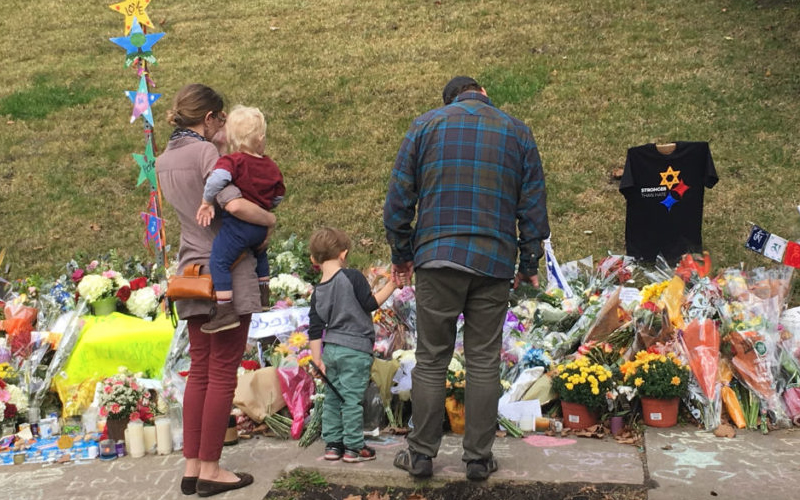


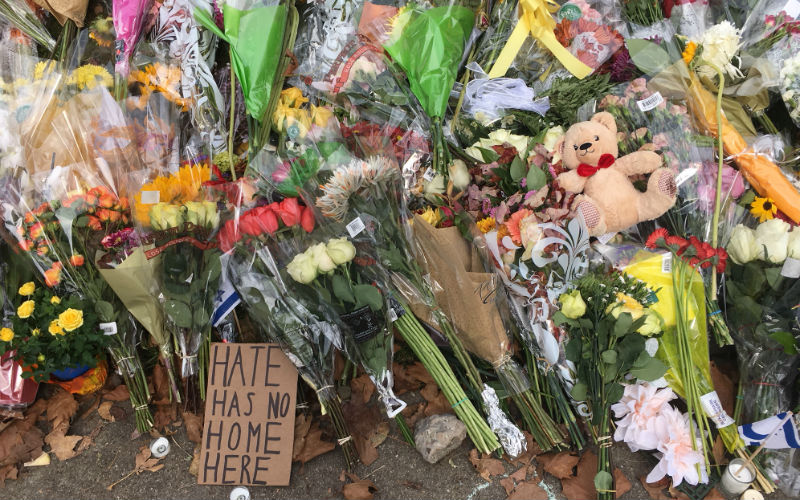
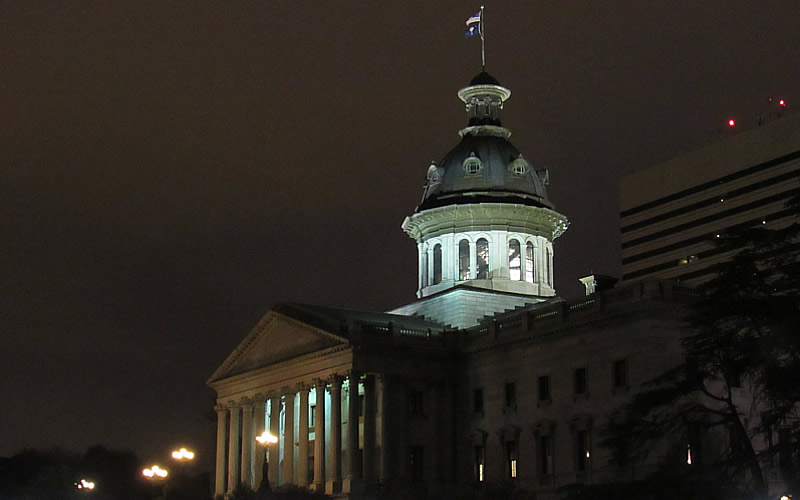
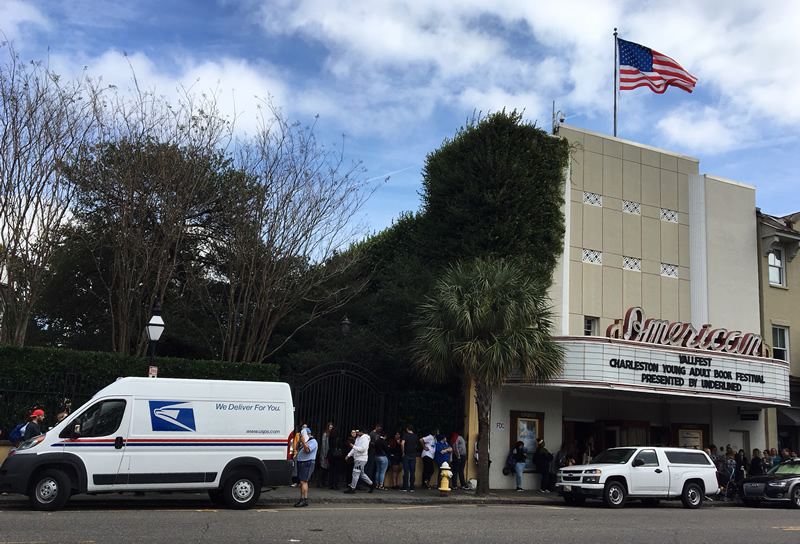

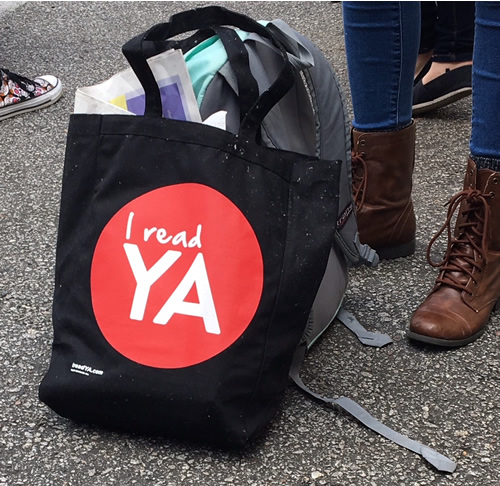
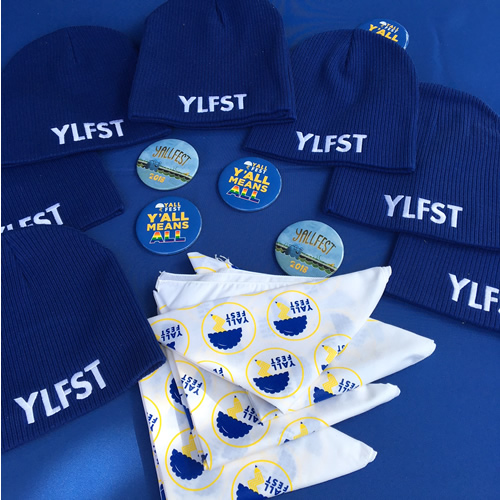

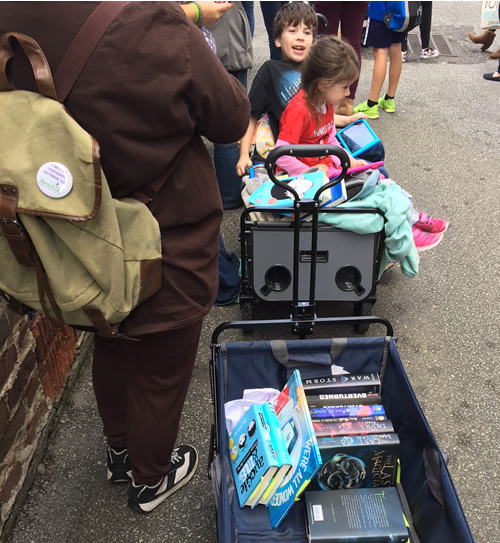
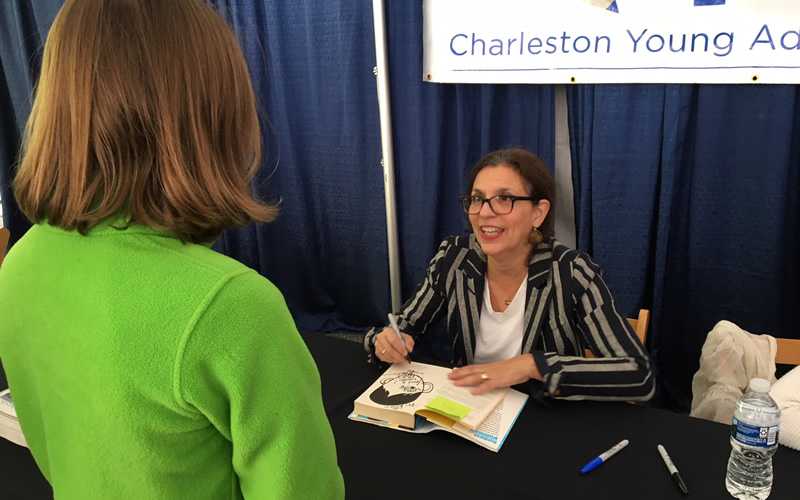

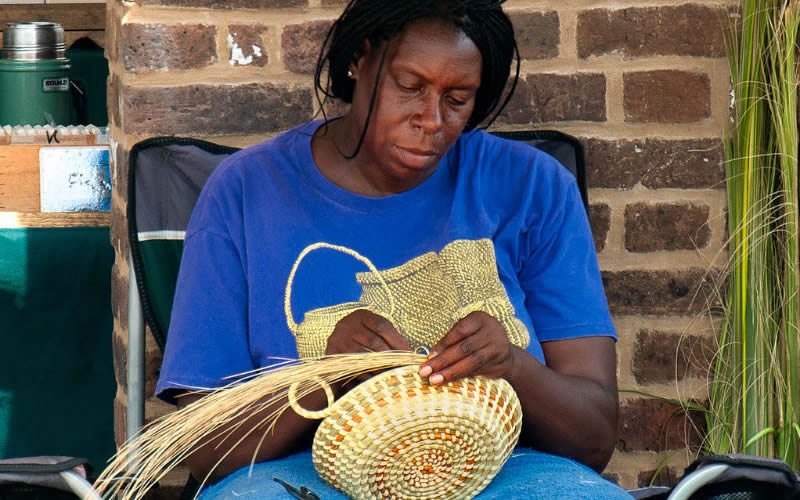

 We Can Do Better, South Carolina!
We Can Do Better, South Carolina!
























